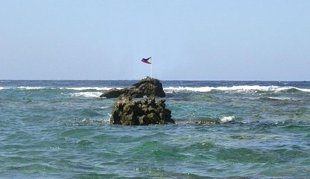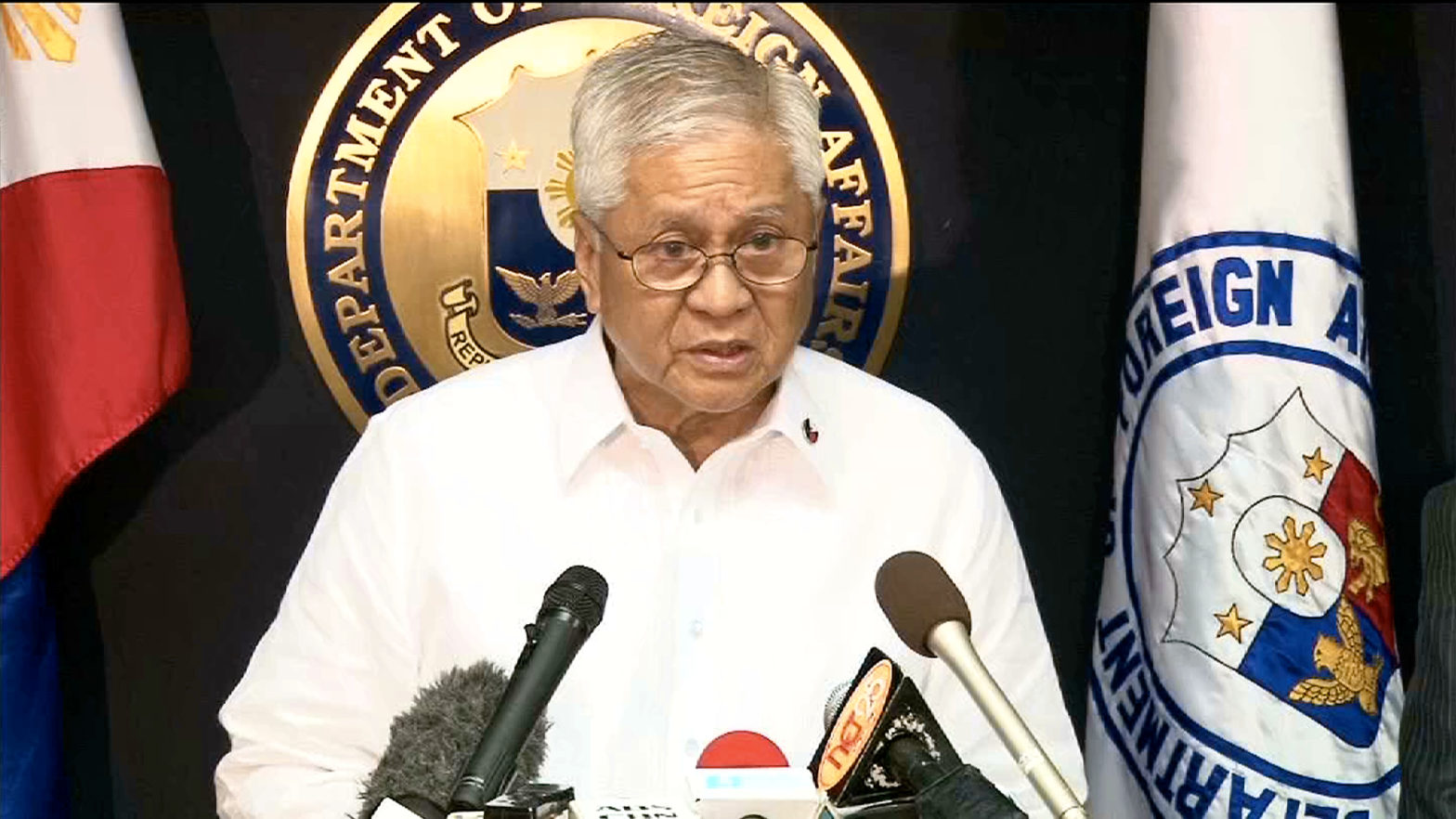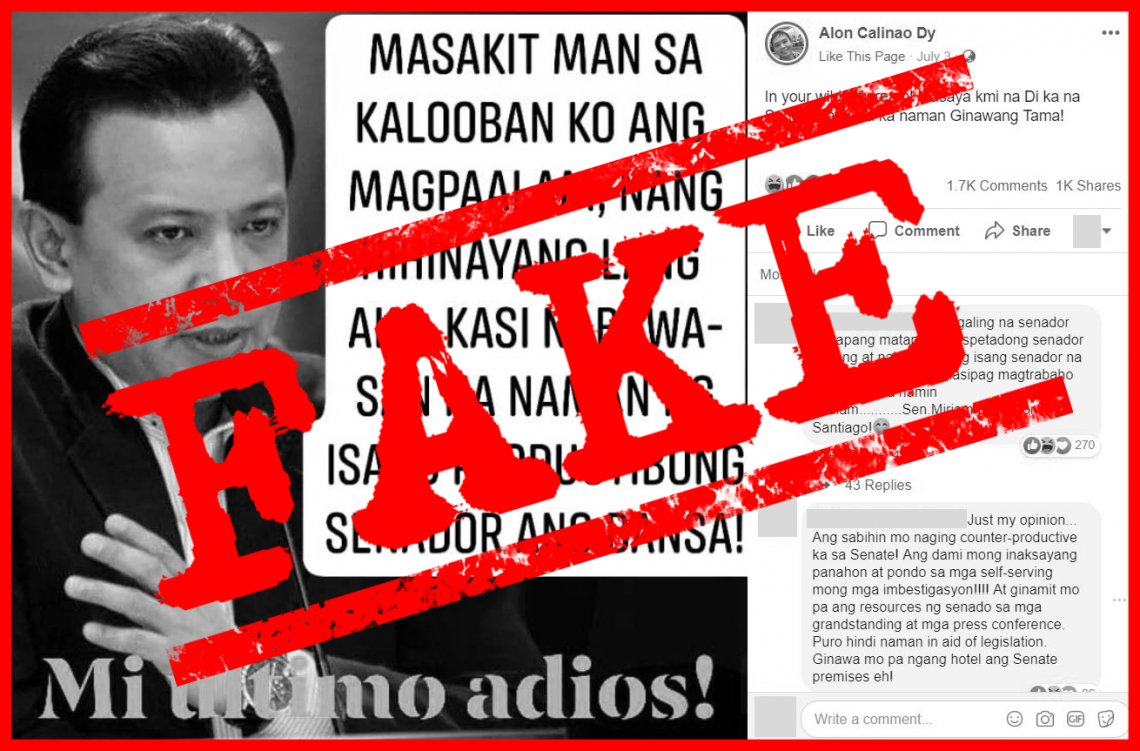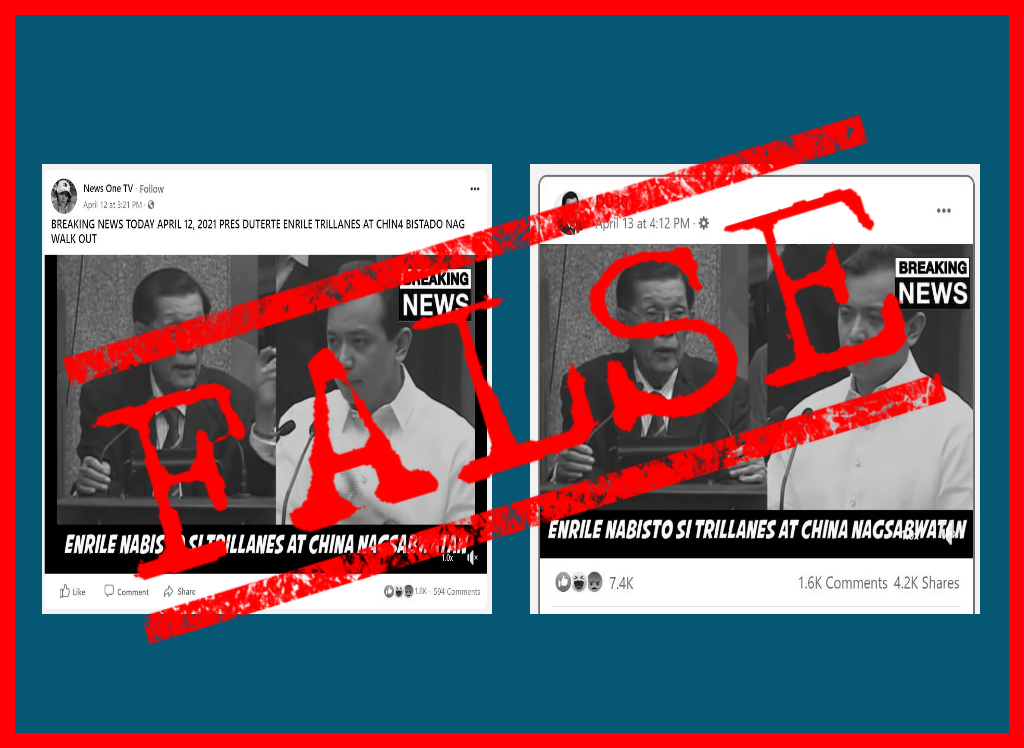By ELLEN TORDESILLAS
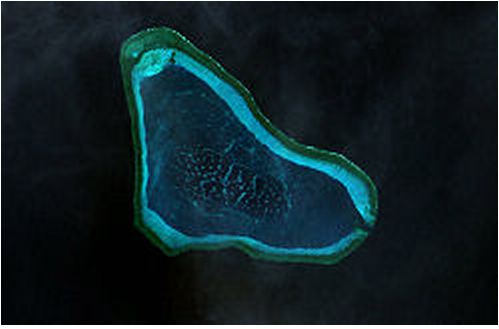 SEN. Antonio Trillanes IV acted as the Philippines’ backdoor negotiator with China from April to July this year, communicating with Chinese foreign affairs officials in a role, Presidential Spokesperson Edwin Lacierda said, in which he won “minor successes.”
SEN. Antonio Trillanes IV acted as the Philippines’ backdoor negotiator with China from April to July this year, communicating with Chinese foreign affairs officials in a role, Presidential Spokesperson Edwin Lacierda said, in which he won “minor successes.”
Lacierda, though, did not give details.
Trillanes said President Benigno S. Aquino III gave him the assignment verbally and could not produce any documents to prove he was acting in an official capacity. The role was fraught with deniability, with Malacanang even saying it was Trillanes who sought the job.
Based on various interviews with Foreign Secretary Albert del Rosario, senior foreign affairs officials, Chinese sources and with Trillanes himself, VERA Files assembled the following timeline of Trillanes’ involvement in the dispute between the Philippines and China over Panatag, also called Scarborough Shoal:
April 8, 2012
The Philippine Navy’s lone modern naval patrol frigate, BRP Gregorio del Pilar, apprehended eight Chinese fishing boats with sizable quantities of endangered marine species, corals, live sharks and giant clams.
The Chinese immediately sent sometime three Chinese Marine Surveillance (CMS) to protect their fishermen. BRP Gregorio del Pilar was withdrawn in consonance with the agreed terms of engagement of “white to white, gray to gray.”
“White to white” means civilian ships are to deal only with civilian ships, in this case the Philippine Coast Guard to the Chinese Marine Surveillance. “Gray to gray” means navy to navy.
The Philippine government sent Philippine Coast Guard and Bureau of Fisheries and Aquatic Resources patrol ships to the uninhabited rocks 124 nautical miles off Zambales province in northwestern Philippines. The Chinese sent more reinforcement.
At the height of the standoff, the number of Chinese vessels and fishing boats reached almost 100.
April 14, 2012
On the diplomatic front, talks were deteriorating with Foreign Secretary Albert del Rosario accusing Chinese Ambassador Ma Keqing of bad faith.
“It appears there is an element that is lacking in our negotiations. I seek a deeper element of trust from our Chinese friends,” Del Rosario said in a press statement.
Chinese sources said the Chinese leadership was confused with all the mixed signals they were getting from Malacañang, the Department of Foreign Affairs and the media, and they wanted to get directly to President Aquino.
May 2012
As tensions between Manila and Beijing worsened, Executive Secretary Paquito Ochoa asked Trillanes whether he “would like to help,” Trillanes said in interviews on Wednesday. He said he saw nothing out of the ordinary with the request since he had earlier also gone to Vietnam on Malacanang’s request.
Trillanes said he looked up Chinese officials he had met in his earlier official visit. Sources said some Chinese-Filipino supporters also facilitated contacts in Beijing.
Preliminary meetings were held in Manila and in Bejing to make sure both sides had the adequate authority from the highest level of government.
One of the officials Trillanes was talking with was Fu Ying, vice minister of Foreign Affairs in charge of “Asia, boundary and ocean affairs and translation and interpretation” and fourth in the hierarchy in China’s foreign ministry. She was China’s ambassador to the Philippines from 1998 to 2000.
In one of his trips to Beijing, Trillanes reported to the President by phone. The President informed him that he will be on speaker phone so the other cabinet members can listen in and be guided accordingly. Del Rosario was among them.
But Del Rosario also had his own backdoor negotiator. In one meeting with the President in Malacanang, Del Rosario was asked by Aquino who authorized the trip of Manuel V. Pangilinan to China to talk with the China National Offshore Oil Corp. (CNOOC) officials.
Pangilinan is chairman and chief executive officer of Philex Mining Corp. that has secured the contract with the government to explore in Reed Bank, an area near Palawan also claimed by China.
Pangilinan apparently had a different account of his trip than what China said he requested of CNOOC. Del Rosario owned up to “sort of encourage Pangilinan to go and open another channel to China thru the private sector since the political channel has failed.”
Del Rosario said it was consistent with the President’s directive. It was at this point that he offered, “I served at the pleasure of the President.”
‘Simultaneous’ pullout
Days before President Aquino left for London and the United States, Fu Ying was in Washington D.C and met with Kurt Campbell, U.S. Assistant Secretary of State for East Asian and Pacific Affairs.
DFA and Chinese sources said Campbell suggested a simultaneous withdrawal of vessels from Panatag Shoal to de-escalate the tension.
A DFA official said United States Ambassador to Manila Harry Thomas relayed to Del Rosario that Beijing has agreed to a simultaneous withdrawal.
This is the “agreement” Del Rosario said Beijing reneged on. He referred to this agreement in several statements.
A DFA statement attributed to Undersecretary Erlinda Basilio, who was in Italy at that time it was released, explained why there was no ASEAN communiqué in the last meeting of foreign ministers of the Association of Southeast Asian Nations in Cambodia. The statement said:
“On the reference to ‘duplicity and intimidation,’ the Philippines forged an agreement with a neighboring country for the simultaneous pullout of all vessels inside the shoal, which we undertook in good faith on June 4. Furthermore, the neighboring country agreed to remove its barrier at the entrance of the shoal.
“Yet to this day, the neighboring country has not fulfilled its obligations under the agreement and has maintained its ships inside and outside the shoal, as well as its barrier, in its aim to establish effective control and jurisdiction in the shoal and surrounding waters.”
Chinese sources said what happened in Washington was that Fu Ying told Campbell she would relay the suggestion to Beijing.
Bejing said they would “gradually pull out” of the disputed shoal. “There was never a commitment for a total pullout,” a Chinese source said, explaining that “they have a domestic audience to consider.”
China has always been against the intervention of the U.S. in conflict in Asia and sources said the Chinese officials did not appreciate it that the Americans were negotiating for the Philippines.
First week of June
Based on Thomas’ confirmation, Del Rosario ordered the pullout of Philippine vessels in the middle of the night. By morning, the President was displeased that Del Rosario had made that order. So he called Trillanes to ask the Chinese why their ships remained in the area when the Philippines had already pulled out.
Trillanes was unaware of such an agreement coursed through the U.S. Following the President’s orders, he called his counterpart in China to follow the Philippine move, since both countries had already agreed on a “simultaneous pullout.”
The Chinese sent word to Aquino, through Trillanes, that they would issue a statement to explain the back-to-port order of their ships, and asked that they be given 48 hours to relay the orders to appropriate agencies in Beijing.
Aquino departed for London and the U.S., relieved that the tension had de-escalated.
The Philippines said it pulled out its ships to safety because of the bad weather in Scarborough Shoal. China for its part said they will go back to port to re-supply.
But before China could complete the pullout, the DFA issued a statement accusing China of reneging on an agreement. This angered China, which insisted there was no such agreement.
The Pangilinan connection
As questions were being raised over Trillanes’ role as backdoor negatiator, Pangilinan has come out accusing Trillanes of fabricating lies. Trillanes had earlier said Pangilinan had a hand in agitating anti-China sentiments among Filipinos.
Pangilinan and Del Rosario go back a long way. Del Rosario has been involved in companies run by Pangilinan, being director of the Philippine First Pacific Co. (Hong Kong), PT Indofood Sukses Makmur Tbk, the largest food company in Indonesia; Philippine Long Distance Telephone Co., Metro Pacific Investments Corp., Philex Mining Corp., Metro Pacific Tollways Corp., Metro Pacific Tollways Development Corp., Manila North Tollways Corp. and ABC Development Corp.
Del Rosario had headed the development of Pacific Plaza Towers, Metro Pacific Corp.’s signature project. He is said to have introduced Pangilinan to the Salim family of Indonesia, which is behind First Pacific.
Pangilinan is chairman and chief executive officer of Philex Mining Corp., which owns 74.79 percent of Philippines Petroleum Corp. Philex Petroleum owns 64.45 percent of Forum Energy Plc. (FEP), an oil and gas exploration company incorporated in the United Kingdom with focus on the Philippines.
FEP owns 70 percent of the Service Contract 72, a seven-year exploration contact in the Reed Bank awarded by the Philippine government in 2010. SC 72 contains the Sampaguita Fields said to contain up to large amounts of oil and gas. FEP is committed to dig two wells in Sampaguita by August 2013 under its work program with the government. It is currently looking for foreign partners to invest in the project, including CNOOC. —with Charmaine Deogracias
